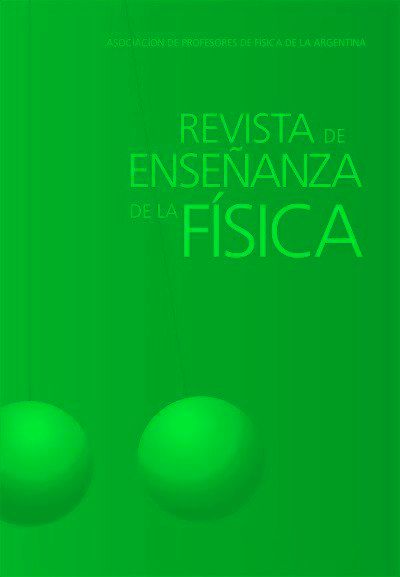The use of social networks for scientific diffusion and Astronomy teaching
DOI:
https://doi.org/10.55767/2451.6007.v33.n2.35219Keywords:
Astronomy, Collaborative teaching, Scientific diffusion, Social networks, Electromagnetic wavesAbstract
The COVID-19 pandemics led to the migration of teaching classes to remote learning, requiring adaptation to digital tools. The teaching
of Astronomic and Electromagnetic Waves is challenging, due to the fact that it encompasses complex contents, abstract thought and
analytical skills, which together call for high motivation and deep scientific contents by the part of the student. Since the digital culture
and social platforms are such important components of the everyday lives of the students, they take part in their cognitive grasp, and
thus, the authors chose to aggregate them to the learning process through curated posts on Instagram constructed by the students. It
facilitated great educational results, participation, motivation and sense of autonomy by the students, who belonged to a middle-class
private high school. It also propitiated scientific diffusion, with the students expressing themselves in and for the society. The whole
process allowed for interesting debates between teacher-student, student-student, and teacher-teacher, relevant steps towards the
virtualization of methodologies involving Astronomic and Electromagnetic Waves.
References
Bandura, A. (1977). Self-efficacy: Toward a unifying theory of behavioral change. Psychological Review, 84(2), 191–215.
BRASIL (2018). Ministério da Educação. Base Nacional Comum Curricular. Brasília.
Da Silva, F. S., Serafim, M. L. (2016). Redes sociais no processo de ensino e aprendizagem: com a palavra o adolescente. Em: R. P. Souza, C. C. Bezerra, E. M. Silva e F. M. G. S. Moita (ABEU), Teorias e práticas em tecnologias educacionais. (67 – 98). Campina Grande, Paraíba.
Lins, G. G. S., Medeiros, V. K., Silva, A. M. e Silva, R. X. A. (2019). Uso do Instagram como ferramenta de divulgação científica e ensino de Física para o Ensino Médio. 6º. Congresso Nacional de Educação. Campina Grande. Brasil.
Lévy, P. (2004). As Tecnologias da Inteligência – O futuro do pensamento na era da informática. São Paulo: Editora 34.
Lévy, P. (1999). Cibercultura. São Paulo: Editora 34.
Matthews, M. S. (2000). Construtivismo e o ensino de ciências: uma avaliação. Caderno Brasileiro de Ensino de Física, 17(3), 270-294.
O'Donnell, A. M. & King, A. (Eds.). (1999). Cognitive Perspectives on Peer Learning (1st ed.). Nova Iorque: Routledge.
Oliveira, A. M. S. (2020). As redes sociais e a popularização do conhecimento científico: uma metodologia para o ensino de Física. Revista Multidisciplinar de Ensino, Pesquisa, Extensão e Cultura, 9(21), 156 -172.
Santos David, F. F., Baldasso, G., Marculino, C. H. S., Almeira, J. V. e Soltau, S. B. (2019). Uma proposta de uso do Instagram aplicável em disciplinas do Ensino Médio. Research, Society and Development, 8(4), 1-14.
Downloads
Published
Issue
Section
License
Copyright (c) 2021 Paulo Roberto Gomes Silva Filho, Maria Letícia Galluzzi

This work is licensed under a Creative Commons Attribution-NonCommercial-NoDerivatives 4.0 International License.
Aquellos autores/as que tengan publicaciones con esta revista, aceptan los términos siguientes:Los autores/as conservarán sus derechos de copiar y redistribuir el material, bajo los términos estipulados en la Licencia de reconocimiento, no comercial, sin obras derivadas de Creative Commons que permite a terceros compartir la obra bajo las siguientes condiciones:
- Reconocimiento — Debe reconocer adecuadamente la autoría, proporcionar un enlace a la licencia e indicar si se han realizado cambios. Puede hacerlo de cualquier manera razonable, pero no de una manera que sugiera que tiene el apoyo del licenciador o lo recibe por el uso que hace.
- NoComercial — No puede utilizar el material para una finalidad comercial.
- SinObraDerivada — Si remezcla, transforma o crea a partir del material, no puede difundir el material modificado.
- Los autores/as podrán adoptar otros acuerdos de licencia no exclusiva de distribución de la versión de la obra publicada (p. ej.: depositarla en un archivo telemático institucional o publicarla en un volumen monográfico) siempre que se indique la publicación inicial en esta revista.
- Se permite y recomienda a los autores/as difundir su obra a través de Internet (p. ej.: en archivos telemáticos institucionales o en su página web) antes y durante el proceso de envío, lo cual puede producir intercambios interesantes y aumentar las citas de la obra publicada. (Véase El efecto del acceso abierto).










